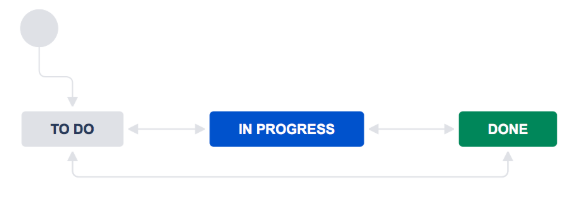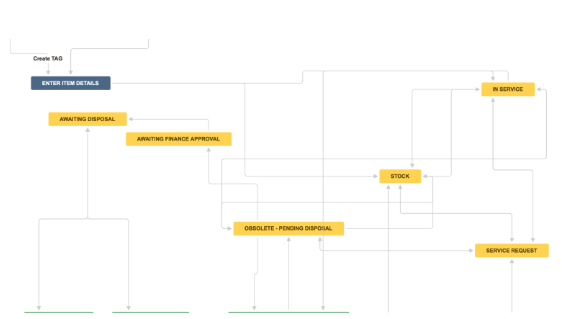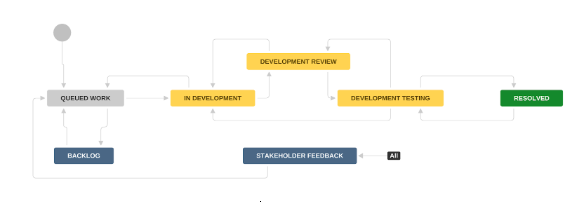Here’s all you need to know about jira workflows, how to create workflow in Jira (+examples) and what else can help you to improve your working processes.
Jira was created first to help the developers teams manage their work in software development. But such features as issue tracking and the visual performance of current work processes make the tool powerful not only for software development, but also for any other team that deals with recruitment, content management, and other projects.
We already discussed how to create a powerful and functional dashboard for Jira here How to Create Dashboard in Jira: Complete Guide. This is a total guide of Jira workflows and their types.
Basic workflow
As any workflow, it’s a model of organizational processes that allow users to track the progress of your task in the system. So, a basic workflow looks like this one:
- To do (reflects the current tusk you plan to do);
- In progress (reflects the task you’re working on);
- Done (reflects the task already checked and completely done).

Jira workflows are extremely important for productive teamwork for several reasons. First, you won’t need to drop a personal email to your colleagues to know all about how the work’s going, etc. Second, all your team will be involved in one system, knowing all working steps, and as a result, know why they do this. In other words, the working processes become transparent for all the team, and the work goes much faster.
To safe you from reinventing the wheel, there already exist best workflow examples, like this:


How to create a workflow?
If you need to adapt the exact system your team works in, the best decision for you is to create the new workflow. How to do that? It isn’t so difficult as you might think first. To create a workflow scheme go to Jira Settings and click on Issues. You’ll find there Workflows Schemes and click the Add workflow scheme button.

Each workflow has such components as statuses (with different status categories), transitions (they can have a wide range of transition post-functions, property, condition, validator, screen).
If you have the rights of Administrator, you can edit, copy and delete the created workflow. Standard workflow in Jira is useful when you just need to track how the work is doing, moving the Issue from “Open” to “Done”, but in most cases things are more complicated, and in this case you’ll need to customize the workflow according to your needs. So, the Administrator can also customize Jira workflow. (more information here https://confluence.atlassian.com/adminjiracloud/configuring-workflow-schemes-776636598.html)
Still, you can upgrade your Jira by adding special workflow extensions (a lot of related to a transition post-function, for example, can initiate an automation, etc) which you will find at Atlassian marketplace. Or, you can make use of expert services. Polontech expert team will be glad to help you with customization of your perfect Jira workflow.












